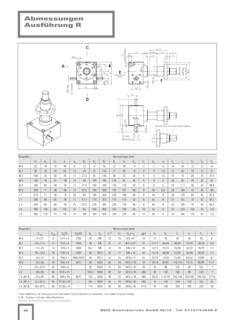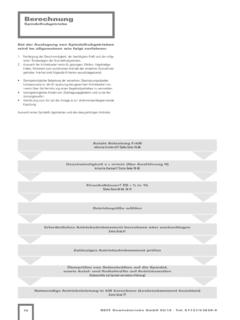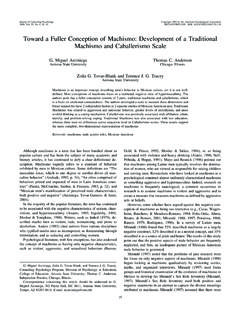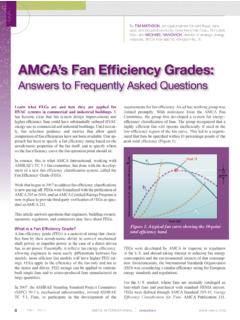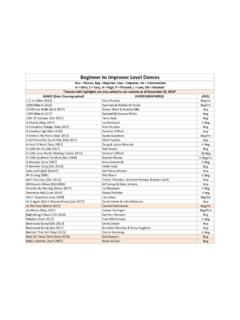Transcription of Beagle Genetics Summary - AlaDar Beagles
1 Summary OF. Beagle Genetics AT UC DAVIS. The Canine Research Group of the UC Davis Veterinary Genetics Laboratory has three ongoing genetic studies in the Beagle breed: 1) Familial & Breed-Based Mapping of Chondrodystrophy 2) Genome-Wide Association & Mapping of Musladin-Leuke Syndrome (MLS). 3) Population Genetics Analysis by SNP Mapping of the Beagle Genome Chondrodystrophy: Beagles affected with chondrodystrophy may suffer myriad problems, including small and disproportionate body size, a shortened neck, curved, deformed legs, a broadened skull, and chronic arthritis.
2 Clinical signs range from mild to severe. Affected status is verified by x-ray stippling ( , punctate bright spots) of the wrist bones (< 3 months). Older dogs are diagnosed by a compressed L7 vertebrae (> 6 months). DNA has been collected from both families and the broader Beagle population, with an emphasis on definitively diagnosed dogs. More than 1000 DNA markers have been analyzed on more than 100. Beagles , with the aim of mapping the causative gene. A single, highly significant genetic signal has been detected on chromosome 6 (p < 10-6). New markers leveraged from the genome sequence in the critical region have been typed on a larger set of DNAs.
3 This fine-structure mapping has further restricted the critical region to roughly 3 million letters of the genetic code. No obvious candidate genes for dwarfism lie within the region, so state-of-the-art, large-scale sequencing strategies are being considered to ultimately detect the mutation, presumably in a novel gene for growth and development. Once identified, the causative mutation for Chondrodystrophy will be translated into a low-cost DNA test that will help guide breeding decisions, enabling breeders to eliminate the deleterious mutation from the gene pool.
4 MLS: MLS, formerly called Chinese Beagle Syndrome, involves multiple defects. Unpublished clinical reports suggest a primary neuronal abiotrophy, but the presence of seemingly unrelated morphological and developmental defects imply that the causative mutation is pleiotropic, and not neuron-specific. DNA samples have been collected from dogs clinically diagnosed with MLS (n = 13). More than 1000 molecular markers have been typed on these samples, as well Mark Neff, PhD October 1st, 2007. Summary OF. Beagle Genetics AT UC DAVIS. as on a large set of healthy controls (n > 50).
5 A single, highly significant genetic signal has been detected on chromosome 9 (p <. 10-5). New markers have been leveraged from the genome sequence and typed on the DNA set, further limiting the region to 5 million base pairs of sequence. No obvious candidate genes lie within the region. DNA from additional affected dogs will be helpful to refine the critical region, thereby providing a better opportunity for successfully pinpointing the mutation by DNA sequencing. SNP Validation: The strong commitment of the Beagle community to genetic research at UC Davis has facilitated this breed s inclusion in a cutting-edge study of DNA SNPs -- single nucleotide polymorphisms.
6 These molecular markers are typed with a massively parallel analysis platform (Illumina Infinium Array 20k) that holds enormous promise for the field of canine Genetics . The Beagle is one of nine breeds included in the pilot study. Data from the study will support assembly of HapMap of the dog genome. This map describes the extent to which large DNA tracts are inherited intact over successive generations. This type of map reflects a pattern of structuring that is unique to each breed -- the greater the structuring, the more powerful the mapping in the breed. This information will positively impact future studies in the nine pilot breeds (including the Beagle ).
7 Support for Beagle Genetics Research: The Principal Investigator s interest in Beagle Genetics dates back to the mid-1990s. The late Judith and Anton Musladin, co-authors with Ms. Ada Lueke on The New Beaglel, helped cultivate a strong working relationship between Dr. Mark Neff (then a postdoct at UC Berkeley), and Beagle breeders interested in resolving the Genetics of chondrodystrophy. Since then, many others have been enormously helpful in developing and progressing research projects. In addition to the Musladins, we gratefully acknowledge the contributions of Ada Leuke, Eddie Dziuk, Debbie Tissot, Jeanne Applegate, and Martin.
8 We also thank hundreds of breeders and owners who have submitted DNA samples from their Beagles , which have served as the foundation for the successful research projects described above. Finally, although we have not yet been awarded funding from the AKC Canine Health Foundation to advance these studies, we have greatly appreciated the willingness of the Beagle National Club to provide a letter of support for our Acorn grant proposal aimed at completing the Chondrodystrophy project. Mark Neff, PhD October 1st, 2007.
